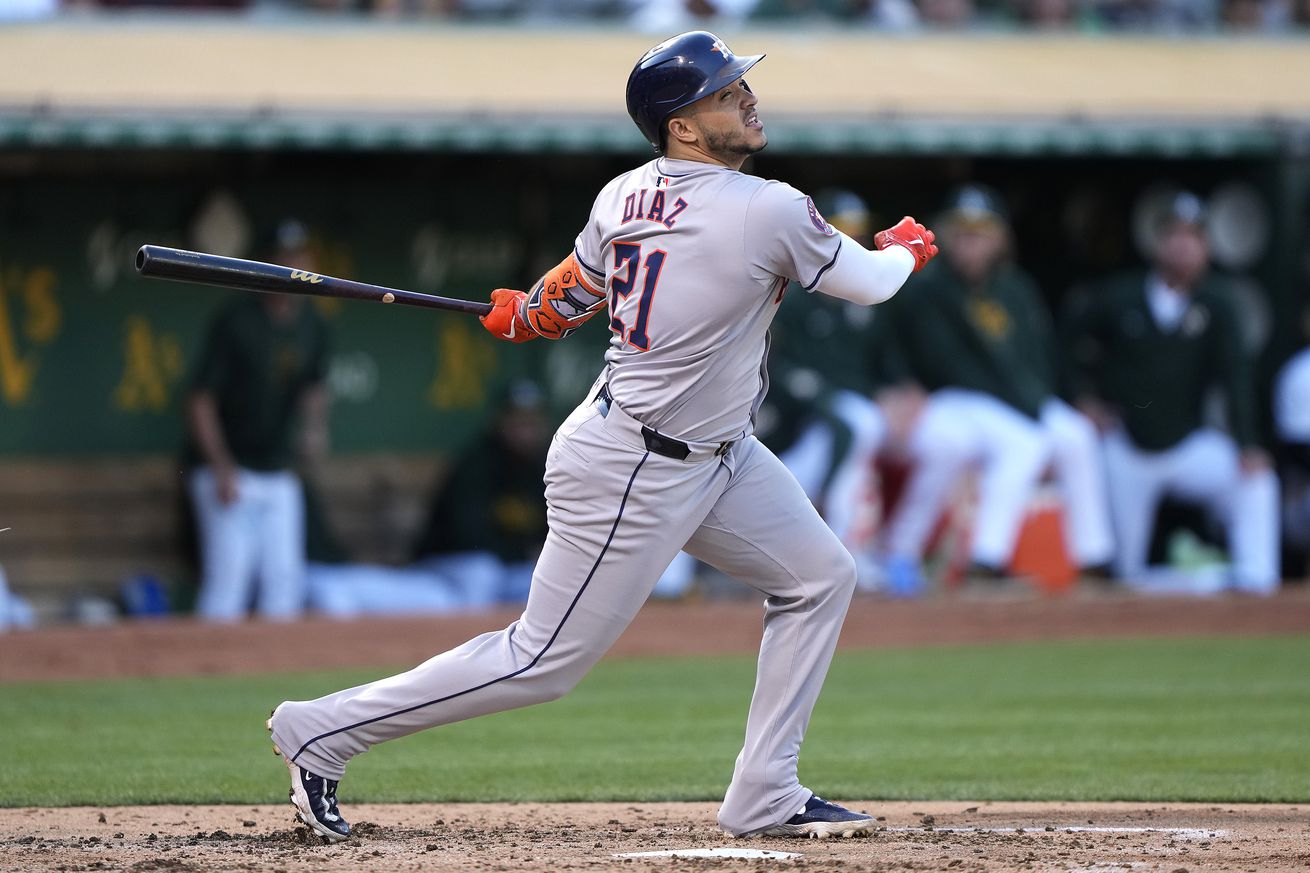
Why are the Astros playing better without Kyle Tucker?
Who needs Kyle Tucker?
All kidding aside, before his leg injury, Kyle Tucker was the best hitter on the Astros. His 173 wRC+ through June 3rd remains the highest on the team, surpassing Yordan Alvarez by 20 points.
And yet, the record of the Astros on June 2nd was 26-34. But in the absence of their best hitter, the Astros’ record is 29-16. Of course, I am not suggesting that the Astros are better without Tucker than with him. Since his injury Tucker’s replacements in right field are hitting 82 wRC+. No doubt improved pitching by Hunter Brown and the backend of the bullpen, as well as better clutch hitting, play a major part in the improved record. But somehow, without their biggest bat, and despite the fact that Tucker’s replacements are replacement level at best, the Astros’ team wRC+ before and after the injury is identical: 111.
How’s that?
Sure, Breggy is finally hitting his mid-season stride, as usual. But the biggest pick-me-up in the post-Tucker lineup is Yainer Diaz.
Diaz was a giant disappointment before June 3rd. His wRC+ was a Maldonado-esque 78. From June 3 to present (not including Sunday’s home run) his wRC+ is 135. That’s a 57 point improvement in performance. That doesn’t fully offset the 91 point drop-off in performance in right field, but it comes a long way.
Here’s his slash line before the Tucker injury:
.249/.278/.358
And after Tucker’s departure
.335/.354/.494
What changed?
Since first entering the big leagues in 2022 Diaz has been plagued by terrible plate discipline. On the other hand, despite swinging at so many bad pitches, he maintains relatively high contact rates. (Shades of an Astro we know from Venezuela) Since last year, Diaz has slowly but steadily improved both his discipline and contact rates.
Fun fact: Yainer Diaz has the 12th lowest strikeout rate in the major leagues among qualified batters at 14.5%. And that rate has gone down from 15.1% pre-Tucker to 13.7% post-Tucker injury.
Somehow, he keeps his K rate that low despite a a 41.7% O Swing rate (outside the zone) since the Tucker injury. But that is down from 42.3% pre-Tucker, and 44.0% in 2023.
Just for comparison, Alex Bregman, the gold standard for plate discipline with baseball’s 9th lowest K%, has a career O Swing rate of 18.6%. So Diaz swings at bad pitches at more than twice the rate of Bregman, but strikes out only a fraction of a percentage point more often.
Diaz makes contact with 64.5% of those pitches he swings at outside the zone, helping account for his high contact rate of 80.4% post Tucker, up from 74.6% in 2023 and 79.5% pre-Tucker injury. Bregman has an 86.5% career contact rate. This year, Jose Altuve has a 79.8% contact rate.
Another notable change in his approach is Diaz’s batted ball profile. Pre-Tucker injury Diaz was groundball prone. But his groundball rate has dropped from 54.5% to 46.5% while his line drive rate has increased from 17.0% to 27.8%. He is also pulling the ball less, 36.8% down from 43.6% while center field and right field percentages are up about four points each. (38.3% and 25.0% respectively)
Yainer Diaz is still an immature hitter, a work in progress, trying to balance aggression and discipline. This writer believes Diaz has not come close to achieving his ceiling. This year he appears to be concentrating on plate discipline and hitting opposite field. Therefore it’s not surprising that his power numbers are down, only nine home runs so far compared to 22 last year in three fewer plate appearances last year. His ISO is down from .256 to .132. Yet he leads the team in RBI with 55, only five less than his total last year while hitting 13 more homers.
Kudos to Hunter Brown, Alex Bregman, but especially Yainer Diaz for stepping up their game during the absence of Kyle Tucker and helping the Astros get to first place in the AL West despite so many devastating injuries.